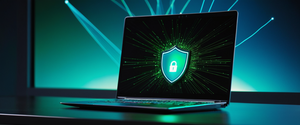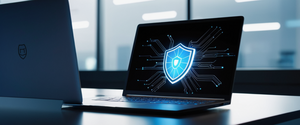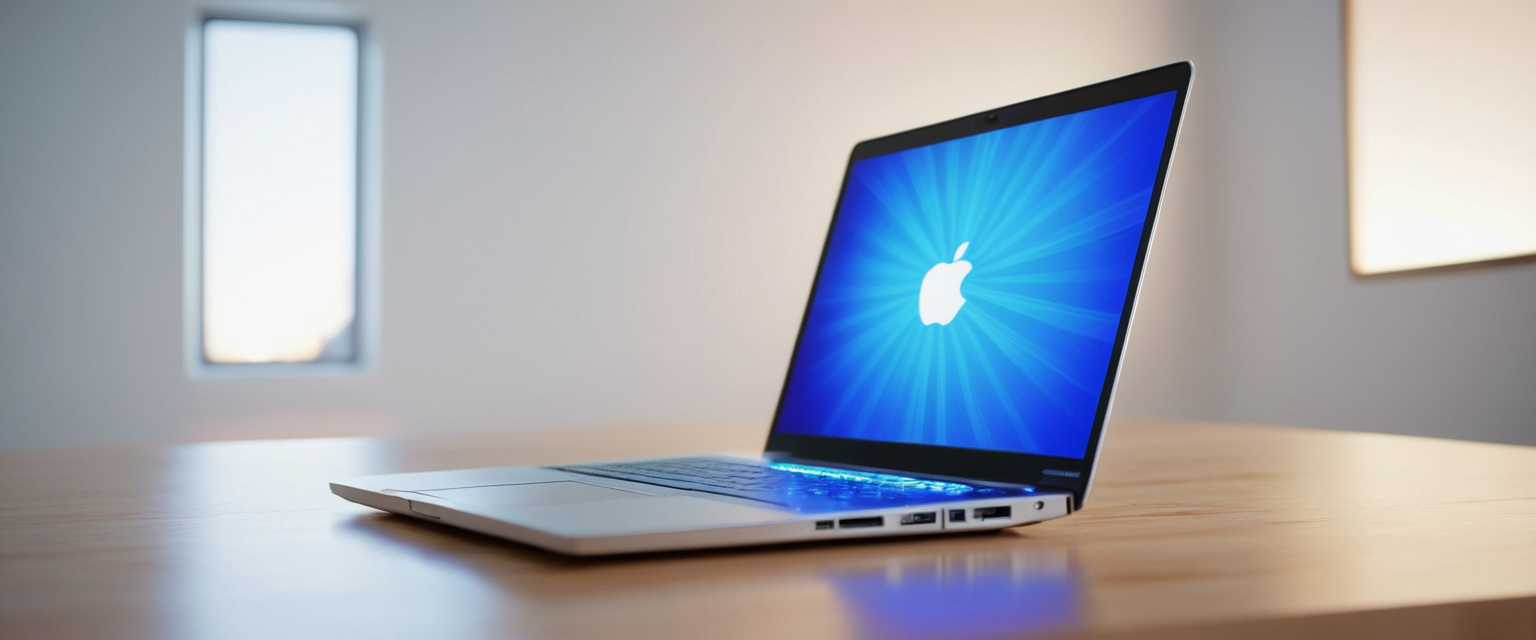
The question of whether MacBook Air users require third-party antivirus software remains contested in the cybersecurity community, with perspectives ranging from Apple’s built-in protections being sufficient to expert recommendations suggesting additional layers of defense are prudent given the evolving threat landscape. As of 2025, macOS faces unprecedented targeting from cybercriminals, with a 73 percent increase in Mac malware incidents compared to the previous year shattering the long-held belief that Apple’s operating system remains impenetrable. This comprehensive analysis examines the current state of Mac security, evaluates Apple’s native defenses against emerging threats, and provides evidence-based guidance for MacBook Air users seeking to make informed decisions about their cybersecurity posture.
The Evolution of Mac Security Perception and Reality
For decades, Apple cultivated a reputation for security that led users to believe their Macs were essentially immune to the threats plaguing Windows systems. This perception was not entirely unfounded, as macOS incorporated several built-in security mechanisms that historically provided robust protection for its users. However, this narrative has undergone a fundamental transformation as Macs have grown more prevalent in both consumer and enterprise environments. The traditional wisdom that “Macs don’t get viruses” originated partly from market dynamics—attackers historically focused their efforts on Windows machines, which represented the overwhelming majority of computing devices globally. When Macs accounted for a small fraction of the market, cybercriminals lacked sufficient financial incentive to develop Mac-specific malware. The security advantage was therefore not entirely technical but rather a function of market share and attacker economics.
The landscape began shifting noticeably around 2019, when Malwarebytes Labs documented a pivotal moment where malware threats against Macs began outpacing those against Windows computers on a per-endpoint basis. This marked a critical inflection point in the cybersecurity ecosystem. By 2021, a study revealed a shocking 1,000 percent increase in Mac-targeted malicious programs, signaling that cybercriminals were no longer treating macOS as a niche concern but rather as a prime target worthy of significant development investment. As Macs now represent nearly 16 percent of global desktop and laptop market share according to StatCounter data from 2025, they have become sufficiently lucrative targets to justify the development of sophisticated, purpose-built malware families.
Built-In macOS Security Features: Understanding Apple’s Native Defenses
Apple has implemented a multi-layered security architecture designed to protect users from malicious software through several complementary technologies. Understanding these native protections is essential for evaluating whether additional third-party solutions provide meaningful supplementary benefits.
The Three-Layer Defense Architecture
macOS employs a structured three-layer malware defense system that represents Apple’s comprehensive approach to threat mitigation. The first layer functions at the distribution level, aiming to prevent malware from ever reaching users’ systems. This layer consists of the Mac App Store’s rigorous review process and Gatekeeper combined with Notarization technology. The Mac App Store implements multiple security measures including automated scans for known malware, human review by expert teams, manual checks for unnecessary data access, trustworthy user reviews, and established processes for app removal if issues emerge. Every single app and each update undergoes review to ensure compliance with privacy, security, and safety requirements.
Gatekeeper represents a critical technology for verifying software authenticity before allowing execution. When users download and open applications from outside the App Store, Gatekeeper verifies that the software is from an identified developer, is notarized by Apple to be free of known malicious content, and has not been altered since distribution. By default, Gatekeeper ensures all downloaded software has been signed by the App Store or signed by a registered developer and notarized by Apple. Users can configure Gatekeeper to restrict installations to only App Store applications, or allow both App Store and known developers, with these policies manageable through Mobile Device Management solutions.
Notarization functions as a dedicated malware scanning service provided by Apple. Developers submitting applications outside the App Store must submit their applications for scanning as part of the distribution process. Apple scans software for known malware and issues a notarization ticket only if none is found. Critically, Apple can revoke notarization tickets for applications later discovered to be malicious, and macOS regularly checks for revocation tickets in the background, enabling rapid blocking of malicious applications.
The second layer activates when software reaches users’ systems, aiming to quickly identify and block known malware before it causes damage. This layer combines Gatekeeper, Notarization, and XProtect. XProtect serves as Apple’s built-in antivirus technology using signature-based detection and removal of malware. Implemented with YARA signatures, a tool used for signature-based malware detection, XProtect automatically detects and blocks execution of known malware. Apple updates XProtect signatures regularly and monitors for new malware infections and strains, updating signatures automatically independent from system updates. In macOS 10.15 or later, XProtect checks for known malicious content whenever an app is first launched, whenever an app has been changed in the file system, or whenever XProtect signatures are updated.
The third layer addresses malware that has successfully executed on systems, functioning as remediation technology. XProtect includes technology to remediate infections, with a remediation engine that removes malware upon receiving updated information delivered automatically from Apple as part of system updates. This system removes malware upon receiving updated information and continues to periodically check for infections, though XProtect does not automatically restart the Mac. Additionally, XProtect contains an advanced engine to detect unknown malware based on behavioral analysis.
Supporting Security Technologies
Beyond the three-layer defense system, macOS incorporates additional protective technologies that work in concert to enhance security. System Integrity Protection (SIP) represents a critical component, restricting root user permissions and limiting actions that the root user can perform on protected parts of the Mac operating system. SIP prevents unauthorized access to system files and kernel extensions, reducing the likelihood of system tampering or attacks on core components. This technology restricts modifications to protected directories including /System, /usr, /bin, /sbin, and /var, allowing modifications only to processes signed by Apple with special entitlements to write to system files.
FileVault provides full-disk encryption, encrypting the entire disk to ensure that only authorized users can access data, making it an essential tool for Mac users concerned about device loss or theft. When enabled on Macs with Apple silicon or Apple T2 Security Chip, data is encrypted automatically, with FileVault providing an additional layer by requiring login passwords for decryption. The App Sandbox isolates applications from accessing certain system resources or data without explicit user permission, limiting the damage that malware or malicious applications can inflict by running apps in restricted environments. The macOS Firewall and stealth mode allow users to control incoming connections and prevent unauthorized access, with stealth mode hiding Mac computers from unauthorized network probes.
Additional protections include iCloud Keychain for secure credential storage, password monitoring to alert users of compromised passwords, two-factor authentication for Apple ID accounts, touch ID for biometric authentication on compatible devices, and the Secure Enclave co-processor that manages encryption keys and biometric data. Rapid Security Response enables faster deployment of security fixes without requiring full macOS updates. Find My Mac allows remote management and recovery solutions, enabling administrators to track, lock, and wipe devices remotely in case of loss or theft. Newer Apple Silicon chips including M3 and M4 offer enhanced security features, with the M4 chip reportedly adding Secure Exclave to prevent outside interference with microphone or camera indicator lights.
Contemporary Threat Landscape: The Reality of Mac Malware in 2025
Despite Apple’s comprehensive security architecture, real-world threats to macOS systems have multiplied significantly, with 2024 and 2025 demonstrating unprecedented sophistication and volume of Mac-targeted attacks.
Current Malware Statistics and Distribution
In 2024, macOS stealer malware proliferated dramatically until Apple remediated a Gatekeeper bypass with the release of macOS Sequoia. Red Canary Threat Detection reported a 400 percent increase in macOS threats from 2023 to 2024, driven largely by stealer malware including Atomic, Poseidon, Banshee, and Cuckoo stealers. These threats were most active early in the year through summer, then tapered off significantly toward year’s end after Apple patched the Gatekeeper vulnerability being exploited. However, a remarkable spike in detections occurred in 2025, with the AMOS malware family alone experiencing a 300 percent surge in detections during August 2025. This dramatic increase represents a shift in the macOS threat ecosystem from a niche concern to a primary target for organized cybercrime operations.
Jamf Threat Labs identified the most common Mac malware categories in 2024, with Infostealers topping the charts at 28.36 percent, followed closely by Adware at 28.13 percent, Trojans at 16.61 percent, and potentially unwanted programs at 15.06 percent. This distribution reflects a sophisticated criminal ecosystem where malware has matured from amateur hobbyist projects into polished crimeware products developed by professional organizations. Malware families now advertise their capabilities, accept feature requests, and ship regular updates, mirroring legitimate software development practices. The United States consistently appears at the top of geographical attack distributions, with France and Germany leading in Europe, India and China anchoring Asia, and Argentina leading Latin American targeting.
Types of Mac Malware and Attack Vectors
Contemporary Mac malware encompasses diverse categories, each representing distinct threats to user data and system integrity. Adware injects unwanted advertisements into browsing experiences while slowing performance and tracking user activity, with examples including Genieo and Pirrit. Spyware steals information such as passwords, keystrokes, or screenshots without user consent, exemplified by OSX/OpinionSpy. Trojan horses disguise themselves as legitimate applications or updates, tricking users into installation, as exemplified by the Flashback Trojan. Ransomware encrypts files and demands payment for decryption, with KeRanger representing a notable Mac example. Cryptominers use Mac CPU and GPU resources to mine cryptocurrency, often causing overheating and slowdowns, with LoudMiner being a known example. Rootkits hide deep within systems to maintain long-term undetected access, such as OSX/Mokes.
Newer threats like HVNC (Hidden Virtual Network Computing) allow attackers to control Macs remotely without user knowledge. Delivery mechanisms have become increasingly sophisticated, with attackers utilizing phishing emails or messages disguised as invoices, shipping notifications, or Apple account alerts, coupled with malicious links or attachments. Trojanized downloads present legitimate-looking apps bundled with hidden malware, while compromised developer tools can result in infected applications being distributed through official channels, as occurred with XcodeGhost when developers unknowingly downloaded modified versions of Apple’s Xcode tool. Malicious advertisements and search engine poisoning direct users to sites serving malware, while public Wi-Fi and man-in-the-middle attacks enable attackers to inject malicious payloads into downloads when users connect to unsecured networks.
Specific Threats and Vulnerabilities
Recent discoveries have revealed critical vulnerabilities in macOS security mechanisms. A zero-day vulnerability tracked as CVE-2025-43300 in the Image I/O framework poses significant risk, as this out-of-bounds write vulnerability allows attackers to manipulate device memory that should be out of reach. Attackers can construct malicious images to exploit this vulnerability, resulting in memory corruption that can crash processes or execute attacker code with elevated permissions. Apple released security updates for iOS 18.6.2, iPadOS 18.6.2, macOS Sequoia 15.6.1, macOS Sonoma 14.7.8, and macOS Ventura 13.7.8 to address this vulnerability.
Gatekeeper vulnerabilities represent a particularly concerning class of security gaps. Researchers discovered that certain third-party utilities and applications pertaining to archiving, virtualization, and Apple’s native command-line tools do not enforce the quarantine attribute required for Gatekeeper to function properly. This oversight can pose a significant threat to Gatekeeper’s integrity, potentially leaving users unprotected from risky applications executing malicious content. Gatekeeper bypass techniques have evolved to include fileloc shortcuts, drag-and-drop operations over dock applications, and crafted ZIP archives that fail to propagate quarantine attributes to extracted items.
A widespread vulnerability designated the “0.0.0.0 Day” affects all Chromium-based browsers including Google Chrome, Firefox, Safari, and Edge on macOS and Linux devices. This vulnerability, present in browsers for the past 18 years, allows attackers to misuse the IP address 0.0.0.0 to access and control local services on computers, bypassing Private Network Access protections designed to prevent public websites from accessing private network endpoints. Chrome began blocking access to 0.0.0.0 from Chromium 128 in July, with gradual rollout completing at Chrome 133, while Apple updated WebKit for Safari and Mozilla blocked this IP address in Firefox.
Protect Your Digital Life with Activate Security
Get 14 powerful security tools in one comprehensive suite. VPN, antivirus, password manager, dark web monitoring, and more.
Get Protected NowThe Case Against Third-Party Antivirus on Mac
Significant objections exist within Apple communities regarding the installation of third-party antivirus software on macOS systems. These concerns merit serious consideration as they rest on both technical and philosophical grounds.
Performance and System Impact
A consistent complaint about third-party antivirus solutions involves their impact on Mac performance. Apple community moderators with extensive expertise repeatedly emphasize that antivirus and similar security software can cause performance issues, security issues, and make macOS appear buggy. Long-time community members report that installing antivirus software often results in slower performance, and in extreme cases, system crashes or functional degradation. This concern reflects a fundamental technical reality: third-party antivirus software typically runs continuously in the background using system resources to scan files and monitor system activity, a process that can consume significant CPU cycles and memory.
Modern research data suggests that antivirus software can indeed affect computer speed, with slowdowns ranging widely from 1 percent to 51 percent depending on the software and system configuration. While lighter-weight options like Surfshark reportedly have minimal impact on system performance, the average third-party antivirus solution still imposes measurable costs. For users with older hardware or those who value responsiveness, this performance tax represents a genuine drawback.
Redundancy of Apple’s Built-In Protection
Proponents of the no-third-party-antivirus position emphasize that macOS already contains comprehensive malware protections that function without user intervention. They contend that adding additional security software represents redundant protection that offers no meaningful additional benefit while introducing system instability risks. Apple’s official position, reflected in support communities by informed moderators, states that Mac computers do not need any sort of antivirus or cleaning software and that anti-virus software can interfere with macOS and potentially cause issues.
The logic supporting this position acknowledges that Apple designed XProtect, Gatekeeper, and related technologies with the primary objective of protecting users from malware without requiring user awareness or intervention. Unlike Windows systems where users traditionally relied on third-party antivirus solutions due to lack of built-in protection, macOS users benefit from a comprehensive native security apparatus that Apple continuously updates and improves. From this perspective, users who practice basic security hygiene—downloading applications only from trusted sources, maintaining current macOS versions, and exercising caution with email attachments—should remain adequately protected.
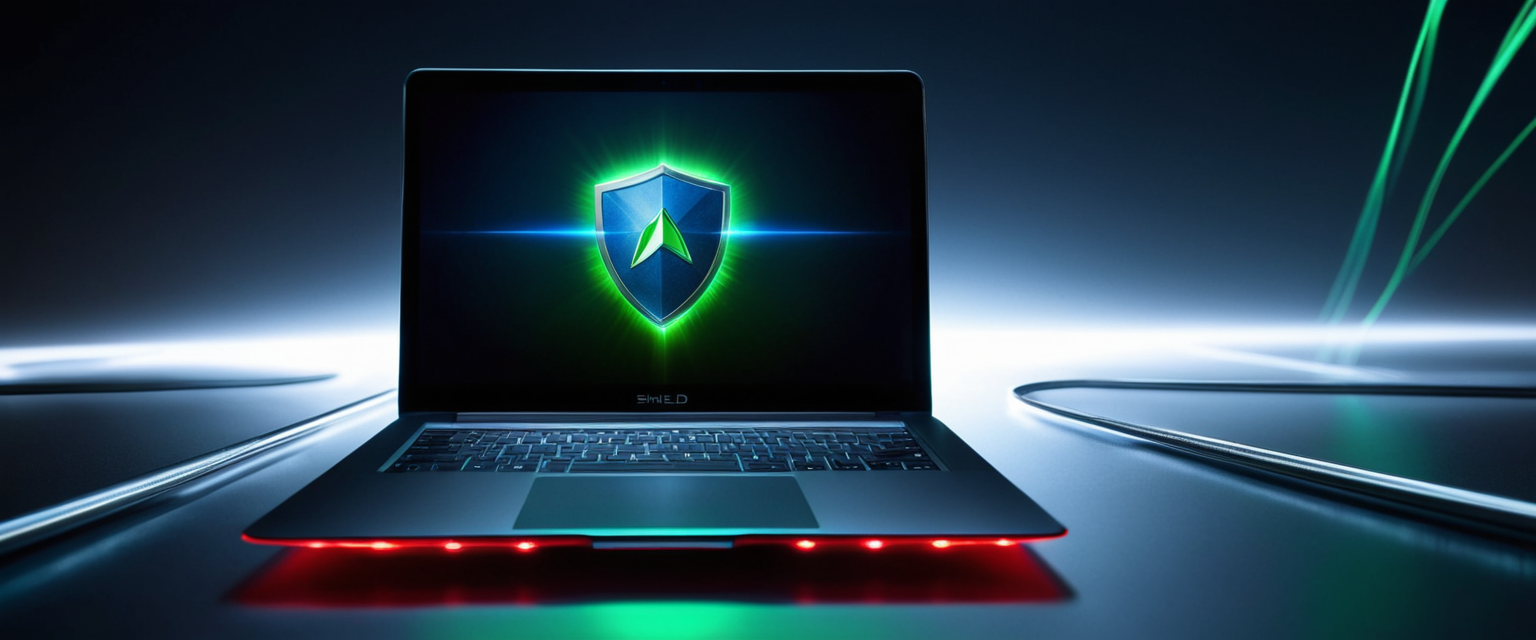
The Case For Third-Party Antivirus on Mac
Despite Apple’s comprehensive security architecture, substantial evidence supports the recommendation that MacBook Air users consider third-party antivirus software as an additional protective layer.
Limitations of XProtect and Apple’s Built-In Defenses
Cybersecurity experts emphasize that while XProtect provides valuable baseline protection, it operates under inherent limitations that third-party solutions can address. XProtect relies on signature-based detection, meaning it can only identify malware that has been previously discovered and catalogued by Apple. When malware authors release novel variants or entirely new families of malicious software, XProtect cannot identify these threats until Apple discovers them, develops signatures, and pushes updates to users’ systems. This detection lag, sometimes lasting hours or even days, creates a window of vulnerability during which new malware can infect systems.
Additionally, XProtect does not identify as many types of potential malware as dedicated third-party antivirus software, and gaps in its library of malicious codes can leave users exposed. Apple, while excelling at hardware and operating system design, is fundamentally a hardware and software company rather than a dedicated security firm. Third-party antivirus companies maintain specialized teams of malware researchers who proactively hunt for emerging threats, analyze malware code, and develop detection signatures. These dedicated security firms often identify novel threats before Apple’s security teams discover them, providing early warning and protection during the initial phases of attack campaigns.
XProtect also lacks certain protective features that contemporary threats necessitate. Built-in macOS protections do not include real-time protection against phishing scams, web filtering to block malicious websites, or advanced firewall capabilities with outbound traffic monitoring. Zero-day malware, exploiting previously unknown vulnerabilities, often slips through undetected by XProtect signatures. Users who browse the web, check email, or install applications from locations outside the App Store remain vulnerable to threats that XProtect does not address.
Zero-Day Vulnerabilities and Emerging Threats
The discovery of multiple zero-day vulnerabilities in macOS demonstrates that even Apple’s security infrastructure faces exploitation risks that cannot be addressed through native protections alone. The CVE-2025-43300 vulnerability in the Image I/O framework exploited in targeted attacks demonstrates that sophisticated threat actors actively develop exploits for previously unknown macOS flaws. During the window between initial exploitation and public patching, users with only native macOS protections remain at risk.
Gatekeeper bypass techniques continue to evolve, with security researchers regularly discovering new methods for circumventing these protections. In 2024, macOS stealer malware proliferated by exploiting a Gatekeeper bypass that allowed attackers to distribute malware through disk images that instructed users to right-click and open unsigned software, bypassing Gatekeeper protections. While Apple patched this bypass with macOS Sequoia by removing the ability to override Gatekeeper through right-click context menus, attackers have already begun experimenting with alternative distribution methods. This ongoing cat-and-mouse dynamic suggests that Gatekeeper will face continued bypass attempts, and users relying solely on built-in protections may suffer infections between discovery and patching of vulnerabilities.
Rising Threat Volume and Sophistication
The exponential growth in Mac malware volume represents perhaps the strongest empirical argument for third-party antivirus installation. The documented 400 percent increase in macOS threats from 2023 to 2024, and the 300 percent surge in AMOS stealer detections during August 2025 alone, indicate that cybercriminals now invest substantial resources in Mac-specific malware development. This investment reflects a fundamental shift in the threat landscape—Macs have transitioned from niche targets to primary targets in organized cybercrime operations.
Modern Mac malware rivals Windows malware in sophistication, with professional cybercriminal organizations developing polished products that are actively marketed, updated, and refined based on customer feedback. These malware families employ multi-stage delivery mechanisms, social engineering tactics, and advanced evasion techniques designed to circumvent Apple’s security measures. The complexity of contemporary threats suggests that relying on signature-based detection alone may be insufficient, particularly for organizations or individuals with elevated risk profiles due to their work with sensitive data.
Risk Assessment: Should You Install Antivirus on Your MacBook Air?
The decision to install third-party antivirus software depends fundamentally on individual risk profiles, usage patterns, and threat models.
Low-Risk Scenarios
Users with low-risk profiles may reasonably rely primarily on macOS built-in protections. This category includes individuals who browse primarily reputable websites, download applications exclusively from the Mac App Store or developers’ official websites, maintain current macOS updates automatically, practice caution with email attachments, and use strong, unique passwords for important accounts. Users working in non-sensitive fields, without access to valuable data, and with limited likelihood of targeted attacks may find that the performance cost of third-party antivirus outweighs the marginal security benefit.
For this population, the occasional use of Malwarebytes for ad-hoc scanning represents a reasonable middle ground, providing supplementary protection during periods of concern without the continuous system resource consumption of full-featured antivirus software. Malwarebytes can be installed, used to scan for potential infections, and then uninstalled or disabled, providing flexibility without permanent performance impact.
High-Risk Scenarios
Users with high-risk profiles benefit substantially from comprehensive third-party antivirus protection. This category includes individuals who frequently download files from the internet, visit unfamiliar or potentially risky websites, use online banking and financial services, handle sensitive business data, or work in industries targeted by cybercriminals such as finance, healthcare, government, or law enforcement. Business users managing multiple Macs across organizations similarly benefit from comprehensive endpoint protection. Individuals traveling to hostile network environments or using public Wi-Fi networks in countries with known surveillance operations should prioritize robust antivirus protection.
For this population, comprehensive antivirus software providing real-time protection, web filtering, phishing defense, and firewall capabilities offers meaningful risk reduction. The performance cost, while measurable, becomes acceptable when weighed against the severe consequences of malware infection, data theft, or ransomware attacks.
Recommended Best Practices for MacBook Air Security
Regardless of whether users install third-party antivirus software, multiple complementary practices contribute to comprehensive Mac security.
Maintaining Current Software
Keeping macOS and installed applications updated represents perhaps the single most important security practice. Apple regularly releases security patches addressing newly discovered vulnerabilities, with these updates often deployed independently of full operating system releases. Users should enable automatic software updates to ensure security patches deploy immediately upon availability rather than relying on manual intervention. The security data file versions that power XProtect signatures receive weekly updates, with the latest versions distributed through automatic background updates. Checking for and installing updates promptly eliminates windows of vulnerability where known exploits could compromise unpatched systems.
Prudent Application Installation
Restricting application installations to trusted sources represents a critical protective measure. Users should configure macOS security settings to allow applications only from the Mac App Store, or alternatively from the App Store and known developers, rejecting installations from unidentified sources. The default macOS setting allows apps from the App Store and signed, notarized developers, providing a good balance between security and functionality. Before installing applications from any source, users should read trusted reviews, verify the developer identity, and confirm the application’s purpose and features. Avoiding pirated software, cracks, or serial number generators represents essential security hygiene, as these sources commonly distribute bundled malware.
Credential and Data Protection
Implementing strong password practices and leveraging encryption protects against credential theft and data compromise. Users should create complex, unique passwords for each online account, ideally through password managers like macOS Keychain or third-party password managers. Two-factor authentication for Apple ID and other important accounts provides additional protection against unauthorized access even if passwords are compromised. FileVault full-disk encryption should be enabled to protect data at rest, ensuring that even if a MacBook Air is physically stolen, data remains encrypted and inaccessible without the user’s credentials.
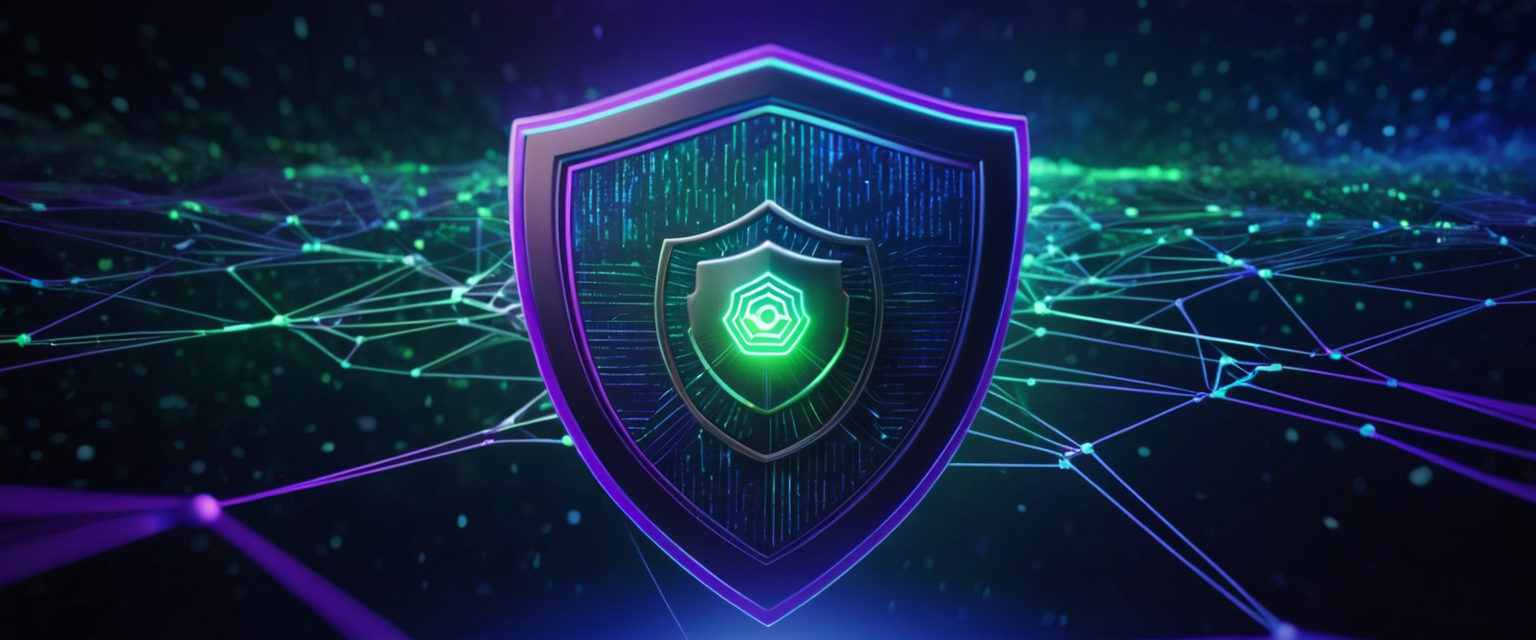
Network Security Measures
Using VPN software when connecting to public or untrusted networks encrypts all data transmission, protecting against network-based interception and credential theft. Public Wi-Fi networks in airports, coffee shops, and hotels lack encryption by default, making them dangerous environments for unencrypted communications containing passwords, financial information, or sensitive data. A quality VPN masks the user’s IP address, hiding location information while encrypting all communications. Users traveling internationally or to hostile network environments should prioritize VPN protection to prevent surveillance and data interception.
Backup and Recovery Planning
Implementing robust backup strategies protects against data loss from malware, hardware failure, or user error. Time Machine automatic backups create regular snapshots of the Mac, enabling recovery to earlier system states before malware infection. Additionally maintaining external backups of critical data ensures recovery options even if primary backups become compromised. These backup strategies also provide insurance against ransomware attacks, as users can recover files from uninfected backup copies rather than paying ransom demands.
Phishing and Social Engineering Awareness
User awareness represents an essential complement to technical protections, as sophisticated phishing campaigns and social engineering attacks often succeed regardless of antivirus protection. Users should carefully examine email sender information, looking for inconsistencies in email addresses or display names that might indicate spoofing attempts. Suspicious links should not be clicked, particularly those claiming urgency or requesting account verification. Instead, users should navigate directly to official websites using bookmarks or manually typed URLs. Legitimate companies never ask for passwords, two-factor authentication codes, or account details through unsolicited emails or phone calls. Apple users in particular should be aware that phishing campaigns frequently impersonate Apple Support or Apple Security, requesting immediate action to verify account information or resolve alleged security issues.
Evaluation of Third-Party Antivirus Options
For users deciding to install third-party antivirus software, several options provide genuine protection benefits while minimizing performance impact.
Recommended Antivirus Solutions
Among available options, TotalAV, Bitdefender, Norton 360, Avast, and Malwarebytes represent well-tested solutions with demonstrated effectiveness. TotalAV achieves a perfect 6 out of 6 protection rating from AV-Test, detecting threats with high accuracy while maintaining minimal performance impact through cloud-based file analysis that offloads processing to remote servers rather than consuming local resources. Bitdefender offers excellent malware protection verified by independent test labs combined with an intuitive interface and lightweight resource consumption. Norton 360 provides feature-rich protection including firewall, password manager, and VPN capabilities even in entry-level subscriptions, making it suitable for users seeking comprehensive security solutions.
Avast Security provides a full-featured free option for cost-conscious users, offering real-time protection, web shielding, network scanning, and scheduled scanning capabilities through an intuitive interface. Malwarebytes offers lightweight performance with less visible impact on system speed compared to competitors, particularly suitable for users concerned about performance degradation. For occasional supplementary protection, Malwarebytes’ on-demand scanning capability allows users to scan systems when concerned about potential infections without requiring permanent installation.
Critical Evaluation Criteria
When selecting antivirus software, users should evaluate several key factors. Detection rate represents perhaps the most important metric, with third-party testing from organizations like AV-Test and AV-Comparatives providing independent verification of malware detection accuracy. Performance impact should be considered, recognizing that some solutions exhibit significantly lower system resource consumption than competitors. User interface intuitiveness affects whether users will actually use advanced protective features and maintain active protection. Feature breadth determines whether protection extends beyond malware detection to include web filtering, phishing defense, firewall capabilities, password management, or VPN services.
Pricing should align with perceived value, recognizing that more expensive solutions do not necessarily provide superior protection. Excellent free options exist that may satisfy the needs of users with modest security requirements, while power users or organizations may justify premium subscriptions for comprehensive features and professional support. Customer support quality matters particularly for users who lack technical expertise or encounter issues requiring assistance.
Addressing Common Misconceptions
Several persistent misconceptions about Mac security merit clarification based on current evidence and expert consensus.
“Macs Don’t Get Viruses”
This statement, while historically reflecting reality, is now thoroughly outdated. Modern macOS systems do face viral threats, adware, spyware, trojans, ransomware, cryptominers, rootkits, and other malware categories. Cybercriminals actively target macOS systems with dedicated malware development efforts, not as secondary targets but as primary objectives. The increasing sophistication and volume of Mac malware demonstrates conclusively that the operating system offers no inherent immunity to contemporary threats.
“Apple’s Security Is Perfect”
Apple’s security architecture represents best-in-class design and implementation, incorporating multiple layers of protection and continuous innovation. However, no security system achieves perfection—vulnerabilities inevitably emerge in complex software systems, and attackers continuously develop novel exploitation techniques. Recent discoveries of zero-day vulnerabilities, Gatekeeper bypasses, and attack techniques exploit gaps in even Apple’s comprehensive security infrastructure. Recognizing these limitations does not diminish Apple’s security accomplishments but rather reflects realistic assessment of security challenges across all platforms and vendors.
“Antivirus Software Always Hurts Performance”
While third-party antivirus software can degrade performance, the magnitude of degradation varies substantially depending on the specific product and system configuration. Modern antivirus solutions, particularly those designed specifically for macOS rather than ported from Windows, can provide protection with minimal performance impact. Some users report nearly imperceptible slowdowns with lightweight antivirus solutions, particularly when running on modern Macs with substantial processing power and memory. The performance question should thus be formulated not as whether antivirus software impacts performance, but rather which solutions provide acceptable performance for specific user requirements.
“Everyone Should Install Antivirus”
Conversely, not every Mac user necessarily benefits from third-party antivirus installation. Users with low-risk profiles, careful security practices, and non-sensitive data may rationally conclude that Apple’s built-in protections suffice, particularly if they value system performance and simplicity. The optimal security posture depends on individual threat models, usage patterns, and risk tolerance rather than representing a universal prescription. Security recommendations should thus be personalized to individual circumstances rather than presented as one-size-fits-all guidance.
Your MacBook Air’s Antivirus Conclusion
The question of whether MacBook Air users need antivirus software resists simplistic binary answers. Instead, evidence supports a nuanced, risk-based approach that acknowledges both Apple’s strong security architecture and the genuine threats posed by contemporary malware targeting macOS systems.
macOS incorporates comprehensive built-in security features including Gatekeeper, Notarization, XProtect, System Integrity Protection, FileVault encryption, and multiple other protections that provide meaningful baseline security for most users. These technologies represent genuine security accomplishments that protect users from many common malware delivery mechanisms and known threats. Apple continuously updates these technologies, with security data files receiving weekly updates independent of full operating system releases.
However, built-in protections face inherent limitations that third-party solutions can address. XProtect’s signature-based detection cannot identify novel malware variants or entirely new threat families until Apple discovers and catalogs them. Zero-day vulnerabilities periodically emerge in macOS security mechanisms, creating windows of vulnerability until patches deploy. Phishing, social engineering, and emerging attack techniques often succeed regardless of antivirus protection. The exponential increase in Mac malware volume and sophistication demonstrates that attackers now invest substantial resources in Mac-specific threats, making comprehensive protection increasingly important.
Risk-based assessment should guide installation decisions. Users with low-risk profiles—those downloading primarily from App Store, maintaining current macOS versions automatically, and practicing caution with downloads and emails—may rationally rely on built-in protections. Users with high-risk profiles—those handling sensitive data, using online banking, visiting unfamiliar websites, traveling to hostile networks, or working in targeted industries—should strongly consider comprehensive third-party antivirus software providing real-time protection, web filtering, phishing defense, and firewall capabilities.
If installing third-party antivirus software, users should select solutions designed for macOS that provide verified malware detection capabilities while maintaining acceptable system performance. Lightweight options like TotalAV, Bitdefender, or Malwarebytes offer compelling security benefits without severe performance degradation. Regardless of antivirus installation decisions, complementary best practices including current software maintenance, prudent application installation, strong password practices, FileVault encryption, VPN usage on public networks, regular backups, and phishing awareness represent essential components of comprehensive Mac security.
The cybersecurity landscape surrounding macOS has fundamentally transformed since Macs enjoyed relative security through obscurity. Contemporary threat realities demand that users make informed decisions about security investments based on their individual risk profiles and threat models, recognizing both the genuine protections Apple provides and the real vulnerabilities that merit supplementary defenses. Neither complacent reliance on built-in protections nor reflexive installation of third-party antivirus software represents appropriate guidance—rather, thoughtful assessment of personal circumstances should guide security decisions that balance genuine protection benefits against performance costs and system complexity.
